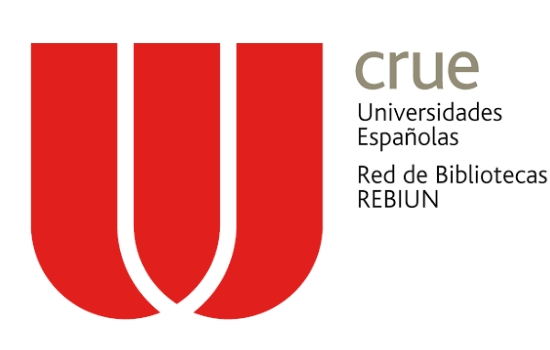Objetivación de la razón y la relación parte-todo mediante la medición: un estudio con niños de séptimo grado
Keywords:
Objetivación, Número Racional, Medición, Mediación, Aprendizaje, Objectification, Rational Number, Measurement, Mediation, LearningAbstract
Resumen
El propósito de este artículo es investigar procesos de objetivación relacionados con dos acepciones del número racional, a partir de la medición. El enfoque investigativo es cualitativo y considera el estudio de un caso, el cual se focaliza en la interacción social y en la mediación instrumental. Las actividades diseñadas favorecieron procesos de objetivación en el seno de prácticas sociales orientadas hacia la solución de una tarea matemática sobre medición. La mediación como un punto de partida permitió establecer un vínculo con la producción cultural histórica de los artefactos que usan los niños no únicamente para producir y reproducir conocimiento sino también para apropiarse de significados culturales.
Abstract
The objective of this paper is to research objectification processes related to the rational number as a ratio and as a whole number through measuring tasks. e research approach is qualitative and considers a case study which focuses not only on the social interaction but also on the instrumental mediation. e tasks were designed to promote the objectification processes of the rational number as a ratio and as a whole number within the social practice which fosters the mathematics task solution. Mediation as a starting point promoted linking the cultural production of artifacts used by kids not only to produce and reproduce knowledge but also to take over cultural meanings.
Downloads
References
Aleksandrov, A. (1976). Visión General de la Matemática. En A. D. Aleksandrov, A. N. Kolmogorov & M. A. Laurentiev (Edits.), La matemática: su contenido, método y significado (pp.17-89). Madrid: Alianza Editorial S.A.
Behr, M., Harel, G., Post, T., & Lesh, R. (1993). Rational numbers: Toward a semantic analysis-emphasis on the operator construct. In T. Carpenter, E. Fennema, & T. Romberg, (Eds.), Rational Numbers: An
Integration of Research (pp. 13-47). Hillsdale, NJ: Lawrence Erlbaum Associates.
Castaño–Arbeláez, N. M., & García-Castro, L. (2014). Dificultades en la enseñanza de las operaciones con números racionales en la educación secundaria. Magistro , 8(16), 123-158.
Cedillo, E. (2006). La enseñanza de las matemáticas en la escuela secundaria. Los sistemas algebraicos computarizados. Revista Mexicana de Investigación Educativa , 11(28), 129-153.
Clark, D., & Sampson, V. (2008). Assessing dialogic argumentation in online environments to relate structure, grounds, and conceptual quality. Journal of Research in Science Teaching , 45(3), 293-321.
Denzin, N., & Lincoln, Y. (2005). e sage handbook of qualitative research. Londres: Sag.
Escolano, R. (2001). Enseñanza del número racional positivo en educación primaria: un estudio desde el modelo cociente. Quinto simposio de la sociedad española de investigación en educación matemática, (pp 151-158). Almería: España
Gould, P., Outhred, L., & Mitchelmore, M. (2000). One ird is ree-Quarters of One-Half. Recuperado el 10 de agosto de 2012 de: www.merga.net.au/documents
Hincapié-Morales, C. (2011). Construyendo el concepto de acción y sus diferentes significados, con los docentes de primaria de la institución educativa San Andrés de Girardota (Trabajo final como requisito parcial para optar al título de Magister en Enseñanza de las Ciencias Exactas y Naturales). Universidad Nacional de Colombia, Medellín, Colombia. Recuperado de http://repositorioslatinoamericanos.uchile.cl/index.php/record/view/579647.
Kozulin, A. (1994). La psicología de Vygostky: Biografía de unas ideas. Barcelona: Editorial Alianza.
Kozulin, A. (1998). Instrumentos psicológicos. La educación desde una perspectiva sociocultural. Buenos Aires: Editorial Paidós.
Knipping, C. (2008). A method for revealing structures of argumentations in classroom proving processes. ZDM , 40(3), 427-441.
Lamon, S. (2012). Teaching actions and ratios for understanding: Essential content knowledge and instructional strategies for teachers. New York: Routledge.
Leontiev, A. (1978). Actividad, conciencia, personalidad . Argentina: Ediciones Ciencias del Hombre.
Moreno, A., De La Barrera, A., Mantilla, M., & Carreño, N. (2003). Una oportunidad para profundizar en aspectos relativos a la enseñanza de la razón como tópico matemático. In: P. Perry, E. Guacaneme, L.
Andrade, & F. Fernández (Eds.), Transformar la enseñanza de la proporcionalidad en la escuela: Un hueso duro de roer (pp. 95-112). Bogotá: Centro de Impresión Digital Cargraphics S.A.
National Council of Teachers of Mathematics. (2000). Principles and Standards for School Mathematics . Reston: Association Drive.
Puerta, F. (2012). Un recorrido geométrico por los diferentes conjuntos numéricos. Escuela de Matemáticas. Facultad de Ciencias.Universidad Nacional de Colombia. Envigado: Gobernación de Antioquia.
Radford, L. (2006). Elementos de una teoría cultural de la objetivación. Revista Latinoamericana de Investigación en Matemática Educativa , Special Issue on Semiotics, Culture and Mathematical inking, 7-21 y 103-129.
Radford, L. (2008). e ethics of being and knowing: Towards a cultural theory of learn. In L. Radford, G. Schubring, & F. Seeger (Eds.), Semiotics in Mathematics Education: Epistemology, History, Classroom, and Culture (pp. 215–234). Rotterdam: Sense Publishers
Radford, L. (2010). Elementary forms of algebraic thinking in young students. In M. F. Pinto, & T. F. Kawasaki, (Eds.), Proceedings of the 34th Conference of the International Group for the Psychology of Mathematics Education , 4° ed. (pp. 73-80). Belo Horizonte, Brazil: PME.
Radford, L. (2011). Embodiment, perception and symbols in the development of early algebraic thinking. In B. Ubuz, (Ed.), Proceeding of the 35th Conference of the International Group for the Psychology of mathematics Education , 4° ed, (pp. 17-24). Ankara, Turkey: PME.
Radford, L. (2013). ree key concepts of the eory of Objectification: Knowledge, Knowing, and Learning. J ournal of Research in Mathematics Education , 2(1), 7-44.
Van den Heuvel-Panhuizen, M., & Buys, K. (Eds). (2008). Young children learn measurement and geometry. Rotterdam: Sense Publishers.
Vygotsky, L. (1978). Mind in society: e development of higher psychological processes. Cambridge, MA, E.U.: Harvard University Press.
Vygotsky, L. (1981). e instrumental method in psychology. En J. V. Wertsch (Ed.), e concept of activity in Soviet psychology (pp. 135-143). Armonk, New York: Sharpe.
Vygotsky, L. (1982). Pensamiento y lenguaje . Barcelona: Paidós
Downloads
Published
How to Cite
Issue
Section
License
Once the article is accepted by the Latin American Journal of Ethnomathematics, the authors cede the rights to publish and distribute the text electronically, including storing it and making it available online.
The authors can distribute their own material without soliciting permission from the Latin American Journal of Ethnomathematics, whenever mentioning that the original version is found at http://www.revista.etnomatematica.org
Copyright © 2008, Latin American Journal of Ethnomathematics
All contents of the Latin American Journal of Ethnomathematics are published under the _ and can be used freely, giving credits to the authors and to the Journal, as established by this license.











